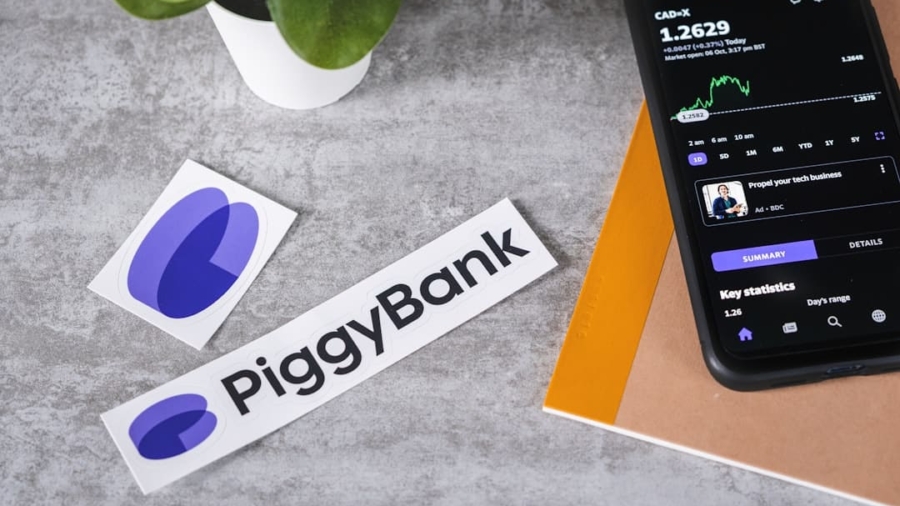In recent years, the banking landscape has undergone a significant transformation, marked by the emergence of digital-only banks. These institutions operate without physical branches, relying entirely on online platforms and mobile applications to provide banking services. The rise of digital-only banks can be attributed to several factors, including advancements in technology, changing consumer preferences, and the increasing demand for convenience.
As smartphones and high-speed internet have become ubiquitous, consumers have grown accustomed to managing their finances on-the-go, leading to a shift away from traditional banking models. The proliferation of fintech companies has also played a crucial role in the rise of digital-only banks. These startups leverage technology to offer innovative financial solutions that challenge the status quo of traditional banking.
By eliminating the overhead costs associated with maintaining physical branches, digital-only banks can offer lower fees and more competitive interest rates. This disruption has not only attracted tech-savvy consumers but has also forced traditional banks to reevaluate their strategies and adapt to the changing market dynamics. As a result, we are witnessing a banking revolution that prioritizes efficiency, accessibility, and customer-centric services.
Key Takeaways
- Digital-only banks are on the rise, offering convenient and accessible banking services without physical branches.
- Millennials prefer digital banking for its convenience, speed, and accessibility, often using mobile apps for most of their banking needs.
- Digital-only banks appeal to millennials with their user-friendly interfaces, innovative features, and personalized services.
- These banks offer innovative features such as budgeting tools, real-time transaction notifications, and seamless integration with other financial apps.
- User experience is crucial in digital-only banking, with a focus on intuitive design, easy navigation, and personalized customer support.
Understanding Millennial Banking Habits
Millennials, those born between 1981 and 1996, represent a significant demographic group that is reshaping the banking industry. Their banking habits are markedly different from those of previous generations, driven by their unique experiences and values. One of the defining characteristics of millennial banking habits is their preference for digital solutions.
This generation has grown up in an era dominated by technology, making them more comfortable with online transactions and mobile banking applications. They prioritize convenience and speed, often opting for services that allow them to manage their finances from their smartphones. Moreover, millennials tend to be more financially conscious than previous generations.
They have witnessed economic downturns and are often burdened by student debt, which has led them to seek out financial products that align with their values. This generation is more likely to research financial institutions before making decisions, favoring transparency and ethical practices. They are also inclined to use budgeting tools and financial apps that help them track their spending and savings goals.
Understanding these habits is crucial for banks looking to attract and retain millennial customers, as they seek services that not only meet their financial needs but also resonate with their lifestyle choices.
The Appeal of Digital-Only Banks to Millennials

Digital-only banks have captured the attention of millennials for several reasons, primarily due to their alignment with the values and preferences of this generation. One of the most appealing aspects is the emphasis on convenience. With the ability to open accounts, transfer funds, and manage investments all from a mobile device, millennials appreciate the seamless experience that digital-only banks provide.
This convenience is particularly important for a generation that values efficiency and multitasking in their busy lives. Additionally, digital-only banks often offer lower fees compared to traditional banks. Many of these institutions have adopted a no-fee model for basic services such as checking accounts and money transfers, which resonates with millennials who are wary of hidden charges and penalties.
Furthermore, the transparency in fee structures and interest rates offered by digital-only banks fosters trust among millennial customers. This generation is more likely to gravitate towards financial institutions that prioritize straightforward communication and ethical practices, making digital-only banks an attractive option.
Innovative Features and Services Offered by Digital-Only Banks
Digital-only banks are at the forefront of innovation in the financial sector, offering a range of features and services designed to enhance the customer experience. One notable innovation is the integration of artificial intelligence (AI) and machine learning algorithms into banking applications. These technologies enable personalized financial advice, helping users make informed decisions based on their spending habits and financial goals.
For instance, some digital-only banks provide insights into users’ spending patterns, suggesting ways to save or invest based on individual behavior. Another innovative feature is the incorporation of gamification elements into banking apps. By turning financial management into an engaging experience, digital-only banks encourage users to set savings goals and track their progress in a fun way.
For example, some apps allow users to earn rewards or badges for reaching specific milestones, fostering a sense of achievement and motivation. Additionally, many digital-only banks offer budgeting tools that categorize expenses automatically, providing users with a clear overview of their financial health. These features not only enhance user engagement but also empower millennials to take control of their finances in a more interactive manner.
The Importance of User Experience in Digital-Only Banking
User experience (UX) is paramount in the realm of digital-only banking, as it directly influences customer satisfaction and retention. A well-designed interface that is intuitive and easy to navigate can significantly enhance the overall banking experience for users. Digital-only banks invest heavily in UX design to ensure that their applications are user-friendly, minimizing friction during transactions and account management.
This focus on usability is particularly important for millennials, who expect seamless interactions with technology. Moreover, responsive customer support is a critical component of user experience in digital-only banking. While traditional banks may rely on in-person interactions or lengthy phone calls for customer service, digital-only banks often utilize chatbots and live chat features within their apps to provide immediate assistance.
This real-time support caters to millennials’ desire for quick resolutions to their inquiries or issues. By prioritizing user experience through thoughtful design and responsive support systems, digital-only banks can foster loyalty among millennial customers who value efficiency and accessibility.
Overcoming Trust and Security Concerns

Despite the many advantages offered by digital-only banks, trust and security concerns remain significant barriers for some consumers, particularly older generations who may be more accustomed to traditional banking methods. To address these concerns, digital-only banks must prioritize robust security measures that protect customer data and transactions. Implementing advanced encryption technologies, two-factor authentication, and biometric security features can help build confidence among users regarding the safety of their financial information.
Transparency is another crucial factor in overcoming trust issues. Digital-only banks should communicate openly about their security protocols and data protection policies to reassure customers that their information is secure. Additionally, obtaining regulatory licenses and adhering to industry standards can further enhance credibility.
By demonstrating a commitment to security and transparency, digital-only banks can alleviate concerns among potential customers who may be hesitant to embrace this new banking model.
The Role of Social Media and Influencer Marketing in Attracting Millennials
Social media has become an indispensable tool for digital-only banks seeking to connect with millennial customers. Platforms like Instagram, TikTok, and Twitter provide an avenue for these banks to showcase their unique offerings while engaging with potential customers in a relatable manner. By leveraging visually appealing content and storytelling techniques, digital-only banks can effectively communicate their brand values and differentiate themselves from traditional institutions.
Influencer marketing has emerged as a powerful strategy within this context. Collaborating with influencers who resonate with millennial audiences allows digital-only banks to tap into established trust networks. Influencers can share personal experiences with these banking services, highlighting features that align with millennial values such as sustainability or social responsibility.
This authentic approach not only enhances brand visibility but also fosters a sense of community among users who feel connected through shared experiences.
The Future of Digital-Only Banking and Its Impact on Traditional Banks
As digital-only banks continue to gain traction among consumers, traditional banks face mounting pressure to adapt or risk obsolescence. The future of banking is likely to see an increased convergence between traditional institutions and fintech innovations as they strive to meet evolving consumer expectations. Many traditional banks are already investing in technology upgrades and partnerships with fintech companies to enhance their service offerings.
The impact of digital-only banks on traditional banking models extends beyond competition; it also drives innovation within established institutions. Traditional banks are increasingly adopting features pioneered by digital-only competitors, such as mobile apps with enhanced functionalities or streamlined account opening processes. This evolution reflects a broader trend toward customer-centric banking solutions that prioritize convenience and accessibility.
As these institutions continue to evolve and expand their offerings, they will undoubtedly shape the future of banking while challenging traditional models to adapt in order to remain relevant in an increasingly digital world.
In the rapidly evolving financial landscape, digital-only banks are increasingly capturing the attention of millennials, a demographic known for its tech-savvy nature and preference for convenience. These banks offer streamlined services, often with lower fees and more user-friendly interfaces compared to traditional banks. A related article that delves into the intersection of technology and lifestyle is Stay Stylish with Wear OS by Google. This piece explores how wearable technology is becoming an integral part of modern life, much like digital banking is transforming financial habits. Both articles highlight the growing trend of integrating technology into everyday activities, catering to a generation that values efficiency and style.
FAQs
What are digital-only banks?
Digital-only banks are financial institutions that operate exclusively online, without any physical branches. They offer banking services such as savings accounts, checking accounts, loans, and investment options through their mobile apps and websites.
How are digital-only banks winning over millennials?
Digital-only banks are winning over millennials by offering user-friendly mobile apps, innovative features, and competitive interest rates. Millennials, who are known for their comfort with technology and desire for convenience, are drawn to the seamless digital experience and lack of fees typically associated with traditional banks.
What are some advantages of digital-only banks for millennials?
Some advantages of digital-only banks for millennials include 24/7 access to their accounts, lower fees, higher interest rates on savings accounts, and innovative features such as budgeting tools and mobile check deposit. Additionally, digital-only banks often have a more streamlined and efficient customer service experience.
What are some potential drawbacks of digital-only banks for millennials?
Potential drawbacks of digital-only banks for millennials include limited access to in-person customer service, potential security concerns related to online banking, and the lack of physical branches for cash deposits and withdrawals. Additionally, some digital-only banks may have limited product offerings compared to traditional banks.

